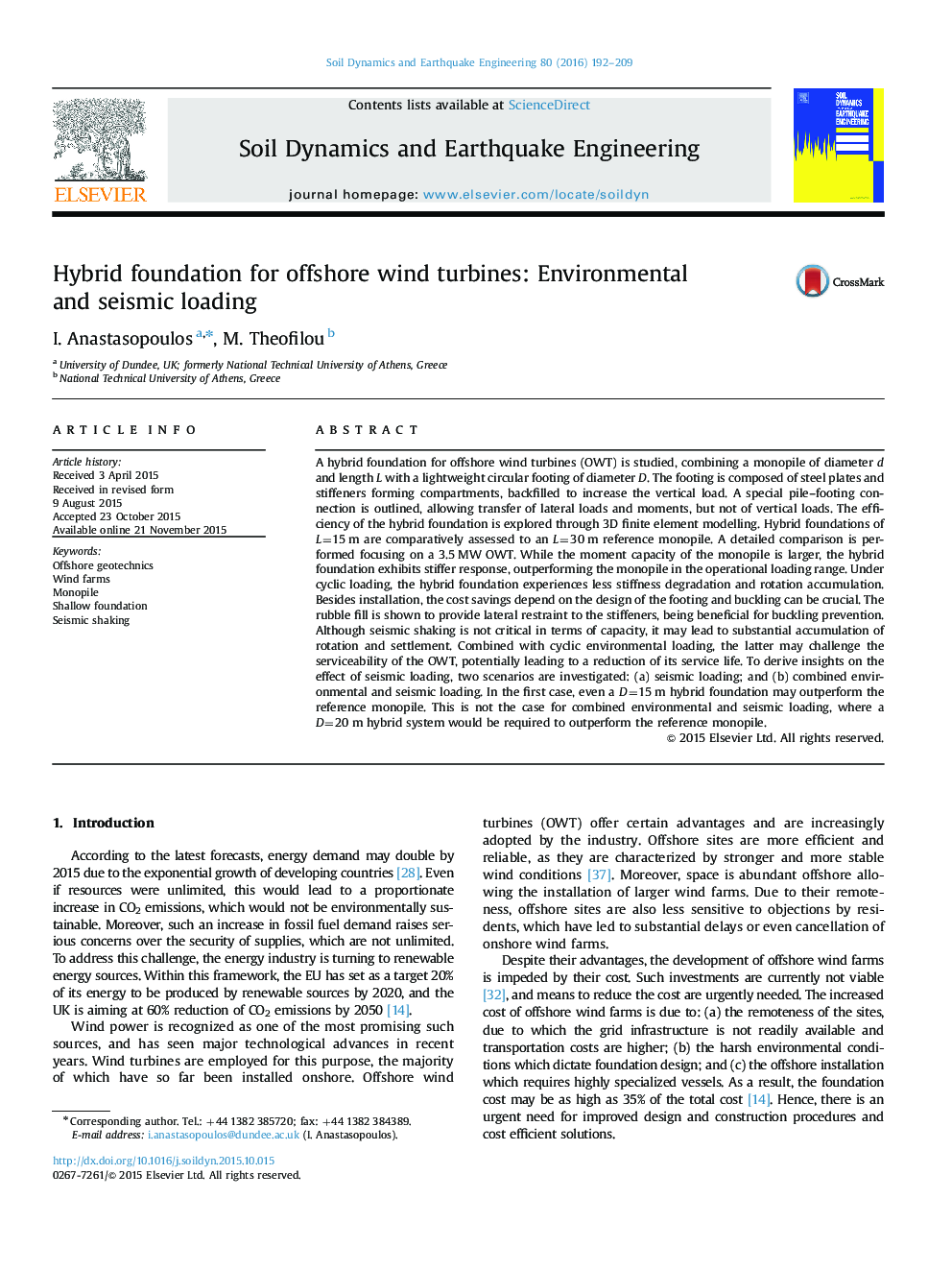| کد مقاله | کد نشریه | سال انتشار | مقاله انگلیسی | نسخه تمام متن |
|---|---|---|---|---|
| 6771775 | 512764 | 2016 | 18 صفحه PDF | دانلود رایگان |
عنوان انگلیسی مقاله ISI
Hybrid foundation for offshore wind turbines: Environmental and seismic loading
ترجمه فارسی عنوان
پایه ترکیبی برای توربین های بادی دریایی: بارگیری محیط زیست و لرزه ای
دانلود مقاله + سفارش ترجمه
دانلود مقاله ISI انگلیسی
رایگان برای ایرانیان
کلمات کلیدی
ژئوتکنیک ساحلی، مزارع بادی، یکپارچه، بنیاد نازک، تکان دادن لرزه ای،
موضوعات مرتبط
مهندسی و علوم پایه
علوم زمین و سیارات
مهندسی ژئوتکنیک و زمین شناسی مهندسی
چکیده انگلیسی
A hybrid foundation for offshore wind turbines (OWT) is studied, combining a monopile of diameter d and length L with a lightweight circular footing of diameter D. The footing is composed of steel plates and stiffeners forming compartments, backfilled to increase the vertical load. A special pile-footing connection is outlined, allowing transfer of lateral loads and moments, but not of vertical loads. The efficiency of the hybrid foundation is explored through 3D finite element modelling. Hybrid foundations of L=15Â m are comparatively assessed to an L=30Â m reference monopile. A detailed comparison is performed focusing on a 3.5Â MW OWT. While the moment capacity of the monopile is larger, the hybrid foundation exhibits stiffer response, outperforming the monopile in the operational loading range. Under cyclic loading, the hybrid foundation experiences less stiffness degradation and rotation accumulation. Besides installation, the cost savings depend on the design of the footing and buckling can be crucial. The rubble fill is shown to provide lateral restraint to the stiffeners, being beneficial for buckling prevention. Although seismic shaking is not critical in terms of capacity, it may lead to substantial accumulation of rotation and settlement. Combined with cyclic environmental loading, the latter may challenge the serviceability of the OWT, potentially leading to a reduction of its service life. To derive insights on the effect of seismic loading, two scenarios are investigated: (a) seismic loading; and (b) combined environmental and seismic loading. In the first case, even a D=15Â m hybrid foundation may outperform the reference monopile. This is not the case for combined environmental and seismic loading, where a D=20Â m hybrid system would be required to outperform the reference monopile.
ناشر
Database: Elsevier - ScienceDirect (ساینس دایرکت)
Journal: Soil Dynamics and Earthquake Engineering - Volume 80, January 2016, Pages 192-209
Journal: Soil Dynamics and Earthquake Engineering - Volume 80, January 2016, Pages 192-209
نویسندگان
I. Anastasopoulos, M. Theofilou,
